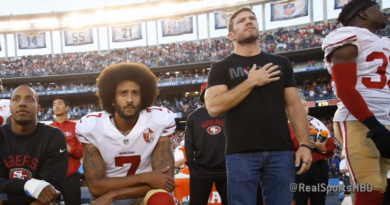Kol Nidre Night Live From Los Angeles
Last year 220,000 people watched Rabbi Naomi Levy lead her congregation Nashuva's Kol Nidre service. No, they did not expand the size of the Hollywood Bowl. The service was broadcast live online by the Jewish Television Network. JTN will be broadcasting the service again this year, and think they may get even more viewers. You can watch it Yom Kippur Eve, Sept 27 at 6PM Pacific Time — and you can watch last year's "show" right now, no waiting — at http://jewishtvnetwork.com/highHolidays .
Is this a good thing? Or a bad thing? With over 200,000 people participating, I suppose it must be either VERY good or VERY bad.
What's good about it? Over 200,000 people were able to hear a high holiday service from the comfort of their own homes. Or from a hospital, a nursing home, or a remote military camp in Iraq or Afghanistan. I suppose a lot of Christians were probably watching too, people who were always curious about what Jews do on Yom Kippur. Of course, those who watched still would not know what Jews usually do on Yom Kippur. The Nashuva service — with a band including guitar, violin, etc. — is certainly not what you'll hear at your grandfather's shul.
I was sent a JTN press release that quotes a woman named Kathy as saying "My father was recently diagnosed with pancreatic cancer. It is likely that this will be our last High Holy Days together. This broadcast allowed my father, my daughter and I to share the High Holy Days together. I wish I could have shown you my father sitting and watching your broadcast while holding the hand of his granddaughter.”
It's certainly hard to argue that Kathy and her family benefited greatly from being able to watch the service.
My friend Rabbi Jason Miller thinks it's a great idea. He wrote in his blog "In this multimedia, high-speed communication, open-source age we are now living in, we must allow Judaism to adapt to these times by embracing new modes of communication and new concepts of community."
I am a little more skeptical than my esteemed colleague. I have a lot of reservations about the idea of participating in High Holiday services by watching TV. And it's not because I'm a Luddite. I bought my first computer in 1980, have had a personal web site for ten years, blog, facebook, twitter, etc. But I'm still a bit of a skeptic on this one.
First of all, there are the halachic issues. There are certain prayers we need a minyan to say. Rabbi Avram Reisner, in his groundbreaking teshuva "Wired to the Kadosh Baruch Hu," ruled that while you cannot make a minyan with electronic participants, you can fulfill your obligation to say certain prayers like Kaddish by listening, in real time, to a service that does have a minyan and answering "Amen."
While R. Reisner found sources allowing fulfilling your obligations this way, the sources are not unanimous on this. There are also halachic considerations regarding the video transmission itself. Taking pictures is forbidden on Shabbat. I would not allow a photographer into a synagogue on the Sabbath. There are those who say that if you had a video camera in a discreet location, no one touched it, it came on with a timer, etc., it is halachically OK. Maybe so. But JTN's production values are greater than that, and watching the video it's obvious they have live camera people. And what about the obtrusiveness of the TV camera?
On the other hand, maybe the presence of a TV camera could be a good thing, reminding us that God is watching (and recording) our every deed. ??
Halacha aside — clever rabbis will always find solutions to halachic problems, and Reform rabbis would generally ignore halachic problems — I have social and philosophical concerns.
What does watching the service on TV do to the idea of community? In his teshuva R. Reisner said:
When the rabbis moved to require a quorum for communal public prayers and banned response absent a quorum, it seems that they were opting to force the community to come together, whereas otherwise, if one could fulfill all obligations alone, they feared that public communal structures would not develop.
I think that is a very real concern. If anything, an even greater concern today, in our "impersonal" age than it was 2,000 years ago. Will we eventually end up with no one showing up in the synagogue? The rabbi transmitting his sermon from home to his congregants sitting in their homes? No kiddush? No bagels? No Scotch?
Besides the community aspect, there is the passivity aspect. Watching TV is as passive an activity as our society offers up. Think couch potato. Prayer, on the other hand, is NOT supposed to be a passive activity. On Yom Kippur you are not supposed to be watching a show the rabbi and cantor are putting on for you. You are supposed to be pouring your heart to God, praying for dear life.
Many people feel that coming to services on Yom Kippur is like going to a performance. The Machzor is the script, the rabbi/cantor/choir are the performers, and they are the audience. I usually try encourage the congregants to instead view the service as one where the Machzor is the script, the rabbi/cantor/choir are the prompters, they are the performers, and God is the audience.
Kathy and her family had a meaningful experience watching the High Holiday service over the internet.
On the other hand, could they have had an even more meaningful experience if they really truly prayed together?
Reb Barry



You seem to have got the niche from the root, Awesome work